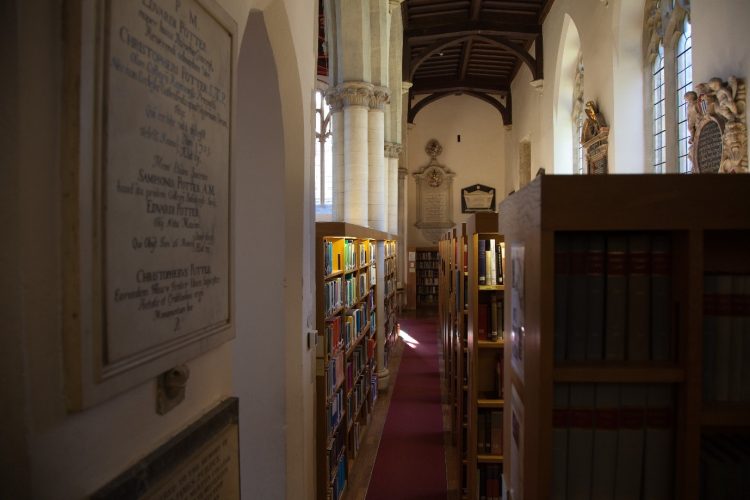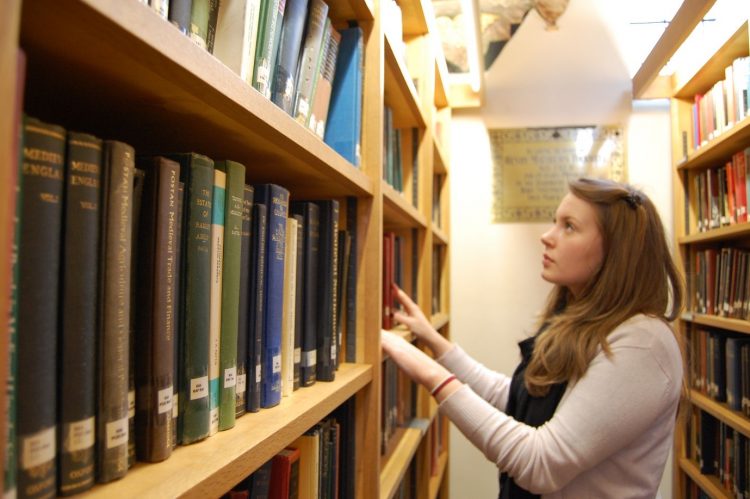RE: Search
12 Feb 2020|
- Library, Arts & Archives

How much do you know about how to find things in the library? Do you know your section like the back of your hand? Do you do your browsing in person or on SOLO (Search Oxford Libraries Online) Do you stick to your reading list like a baby sloth to a tree or branch out a little bit? Why does it matter where we put library books on the shelf when you can just look them up on SOLO?
Well, SOLO is great but what happens when there are no helpful buzzwords in the title or the subject headings are sparse? A good example is Greta Thunberg’s ‘No one is too small to make a difference’. If you know the title, good for you, but it’s never going to come up in a search for ‘activism’ or ‘environment’ because none of the title words flag up the subject matter. Sometimes subject heading searches can help but they are only as good as the catalogue record. Old-fashioned browsing has not lost its place in the world.
How do we go about organising books?
We have a lot of decisions to make when we put a book on the library shelves. We have a classification system but it is far from perfect and it is rare that there is only one place a book could fit. Even the Dewey Decimal and Library of Congress systems, the most popular and comprehensive systems in the world, have their gaps, out of date bits, and very grey areas.
We have a relatively small library covering a lot of different subjects so we have to be careful how we focus the classification system. Having a whole section or two on Shakespeare (S13 and S14) makes a lot of sense. His works are on multiple reading lists, are vital parts of English literature, and many volumes of commentary have been written specifically on aspects of Shakespeare. Having the same size section on Jasper Fforde, excellent as he is, would make less sense. He is on no reading lists that I am aware of, does not (yet) have the literary clout of Shakespeare, and there are no published commentaries on his work. Fforde can slot nicely into S33 (21st century literature) without too much fuss whereas putting Shakespeare into S15 (Tudor and Jacobean drama) would swamp the section and make browsing for Marlowe like trying to find a small child in a large ball pit.
What about books that are useful to a variety of people? A textbook on maths for chemistry and biology students, for example. Where does that go? Technically, it’s a maths book so it could go in ‘L6 – Applied Mathematics’. But the students who are going to be looking for this book will be Chemistry and Biology students, probably not Maths students, so it makes no sense to put it where only Maths students will come across it. Chemistry then? But the content is not actually chemistry so it needs to be some sort of Chemistry reference section. And what about Biology? Do we get two copies and put one in Chemistry and one in Biology? We need to decide whether multiple copies will be used especially as some of these textbooks can be hundreds of pounds each. Sometimes there isn’t a perfect solution and we might end up putting it in Maths anyway because it’s on the reading lists.

Then there is the word that makes librarians shudder – interdisciplinary. Don’t get us wrong, interdisciplinary studies are fantastic in every other way, taking into consideration multiple perspectives and examining topics across subject borderlines. In the world of book classification, however, tiny librarian tears are shed. We deliberated long and hard over our copy of Sandeep Jauhar’s ‘Heart’. It is a very unusual type of book, written about the heart by a cardiac surgeon. Some of the book is on surgical procedure and some is about the medical treatment of the heart but it also dwells on the meaning of the heart in metaphor and literature. It is also part autobiography as the author covers his own and his family’s cardiac medical history and his experiences as a doctor at the site of 9/11. Should it go in G.Lit. with the non-fiction literature? Should it go in SA41 with the 21st century US authors? Should it go in US History as an autobiography? In the end, we decided on R1 – General and Clinical Medicine. Is it the same as a medical textbook? Definitely not. Would it have fitted any better in the other sections? Probably not. In the end, the trainee doctors are probably going to be the ones most interested in it and they are going to be looking at the Medical books so there it goes.
So why do we agonise over classification?
It gets a little more complicated when the aim is to find ‘a book’ on a topic or to see what we have in a subject area. Then it matters that they are together in some form. But how do we get the ‘right’ books grouped together? Do we group by author? But what happens when there are some super-smart individuals who write on multiple subjects (hi, Mr Foucault)?
Inevitably, grouping means that some subjects are together at the expense of others. For example, anyone looking for History or Philosophy books in Teddy Hall Library will likely find them all together and have a much richer and more comprehensive browsing experience. Anyone looking for books on religion will find them scattered throughout Philosophy, Sociology, and History which is much harder to browse. That choice was made because we have no students in Theology but have many in History and Philosophy. A good library is one that is constantly changing along with the subject matter and students to make books as findable as possible. We are always working on lots of aspects of Teddy Hall’s collections and, particularly over the summer, you will see us moving sections of books, dissolving some, forming new sections and rearranging others as the demand changes. The stereotypical never-changing, dusty library is the picture of a failed library. If the books are not used, they are not useful. We are always keen to have students tell us what they need; we are here to be useful.
Category: Library, Arts & Archives